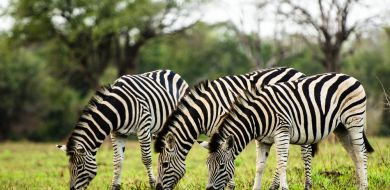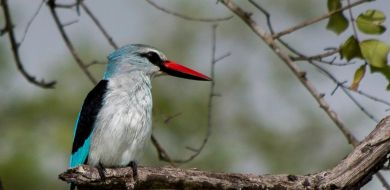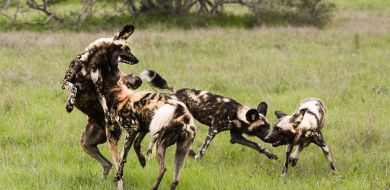Sabi Sabi Wild Facts: Redbilled Oxpeckers Part 1
on Dec 14, 2014The reason for Oxpeckers sitting on mammals.
Oxpeckers will sit on certain mammals and target the ticks and other small parasites found on the skin and in the coats of these animals. Oxpeckers' bills are especially adapted to their lifestyle. The bills are pointed as well as laterally compressed which helps the birds work their way through the coats of the mammals in a comb-like fashion and to pry out well embedded parasites.
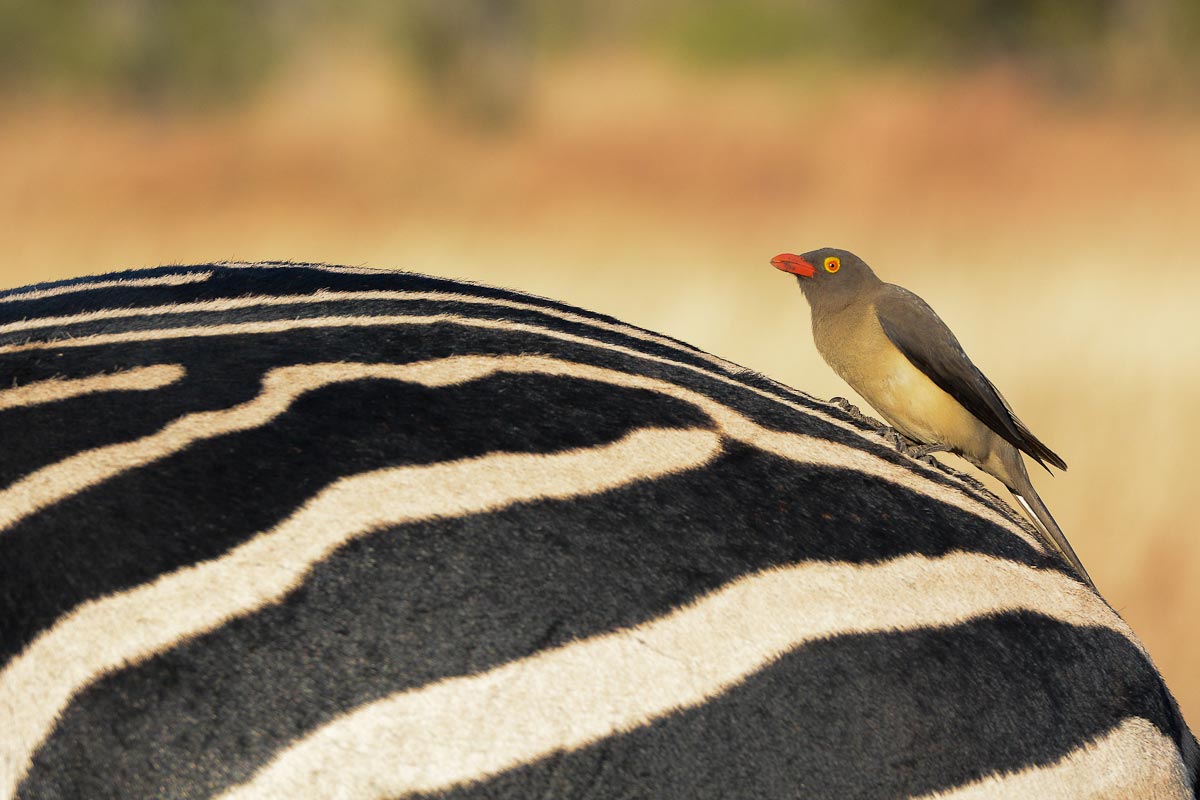
The birds are also known to help clean-up open wounds. What they are after around the open sore is the rotting wound tissue. Oxpeckers are quite efficient at cleaning these lesions.
Their legs are also well adapted to a life spent perched on mammals. The legs are shortened to enable them to grip onto their moving hosts. Powerful toes and sharp nails further benefit the Oxpeckers in their quest to feed and as a spin off keep their mammal hosts' parasite numbers under control.
sabi sabi wild facts: redbilled oxpeckers part 2
The Redbilled oxpecker Buphagus erythrorhynchus, is one of only two species of birds in the family Buphagidae. It is a fairly common bird, found in the savannah grassland and bushveld regions of Sub-Saharan Africa, from Ethiopia and Somalia all the way down to Mozambique and the north-eastern parts of South Africa. The only other species in the Buphagidae family, the yellowbilled oxpecker, is far less common. At one stage it became extinct in South Africa, but in recent times it has naturally re-established itself from the north into the Kruger National Park and its environs.
Redbilled oxpeckers only occur where there are animal hosts for the species of insects - mostly ticks - that the birds eat. The hosting animals are generally antelope like impala or kudu, or larger mammals such as zebra, giraffe, buffalo and rhino. In farmland areas, the hosts can also be domestic stock such as cattle. Elephants and a few species of small antelope will not tolerate the birds at all.
The redbilled oxpecker is a starling sized-bird. Although it is a fairly plain olive-brown with creamy under-parts, the bird is very easy to identify. Adults have totally red beaks and distinctive yellow rings around their bright red eyes. They have strong legs and long, particularly sharp claws which enable them to cling onto the sides and backs of their hosts at precarious angles. They also have short, stiff tails which are used as props. Aside from the colour, it is in the shape and action of their beaks that one sees the biggest differences between the two oxpecker species. The yellow billed oxpecker uses its stout beak to pluck parasites off its hosts. The red billed cousin uses its slimmer, flatter beak in a scissor-like motion to remove its meals. This same sharp beak is also used to peck at any sores or scabs on the host.
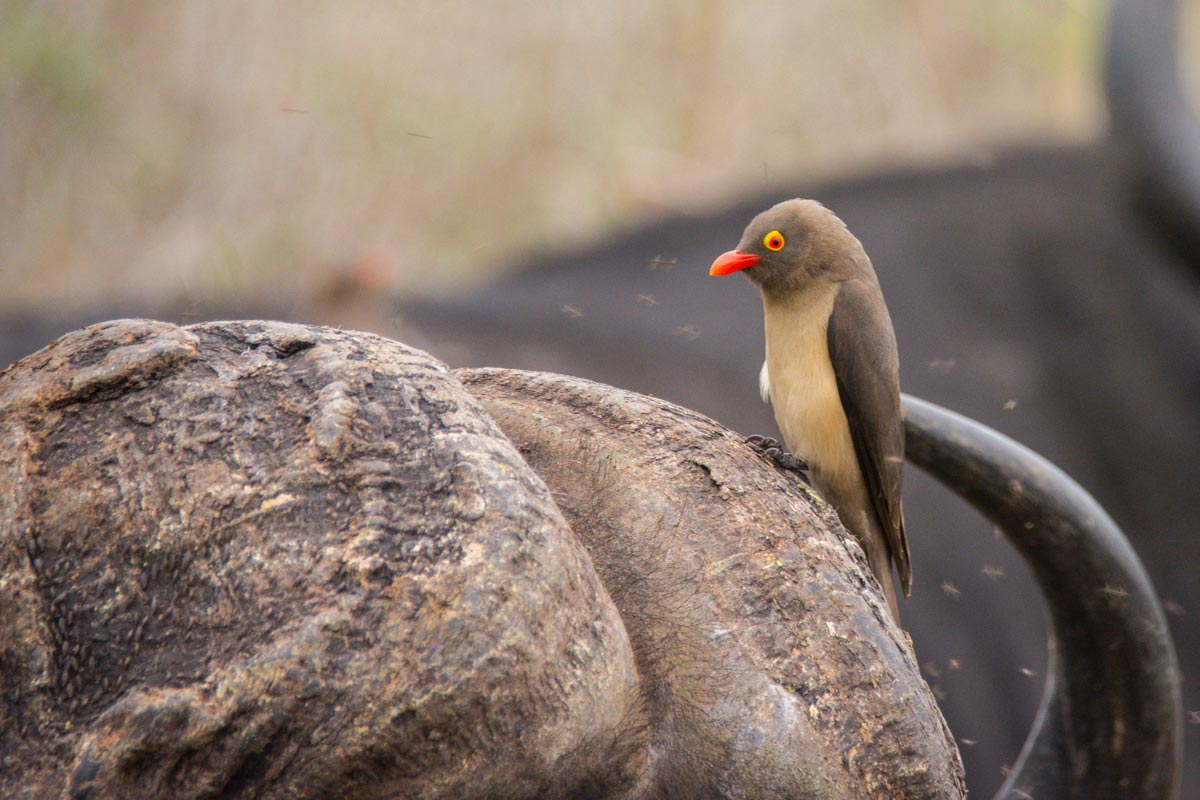
The oxpeckers diet consists mainly of ticks, but also includes other parasites such as blood-sucking flies, fleas and lice. Adult of the species can consume 100's of ticks and 1000's of larvae a day, given the opportunity. The birds also trim wounds on their hosts' hides and feed on the blood. This delays the healing of injuries and attracts more parasites to the area - opening a debate on whether or not the oxpecker is being more of a hindrance than a help, and if it is in itself a type of parasite. What is absolutely clear though is that by removing parasites, earwax and grease from the host's body, the oxpecker minimises the animal's grooming time and effort to a very large extent.
Oxpeckers are monogamous unless a mate dies, at which time the bird will take another mate. In the Sabi Sabi area the birds breed in the summer, with courtship and copulation taking place on the backs on the animal hosts. In a group there will be only one breeding pair, with the other birds helping to feed the chicks after hatching. On average 3 eggs are laid in deep nests which are built in natural tree holes or cavities, and are lined with hair plucked from the host. Both males and females will take care of the eggs during incubation. A breeding pair may have up to three broods each season.
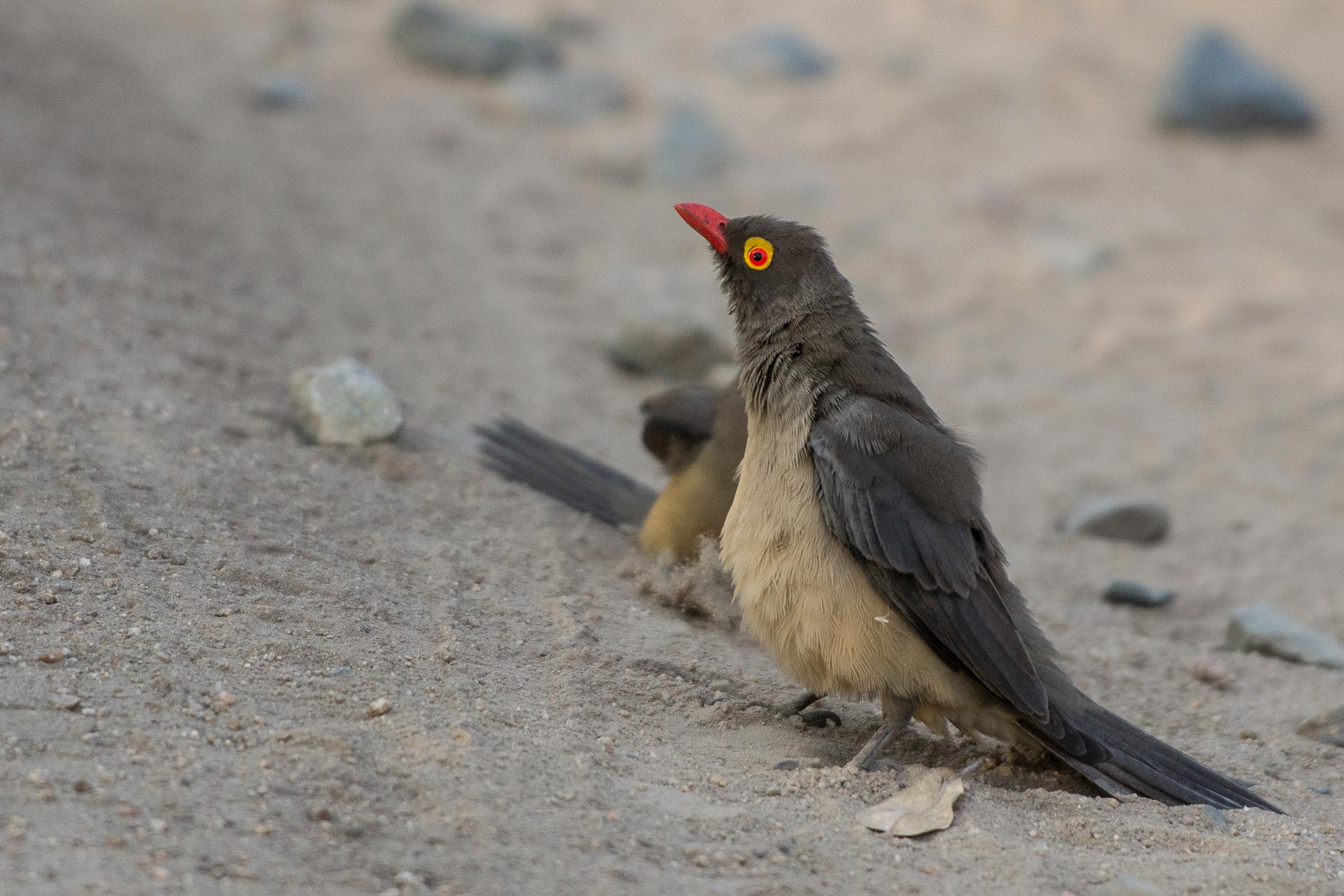
While oxpeckers are not threated, their numbers have declined in areas where farmers use toxic pesticides. Game rangers at Sabi Sabi are taught to familiarise themselves with the birds call, as very often it will act as a good indicator, leading to giraffes, rhino or even Cape buffalo. The birds act as watchmen, their rattling alarm calls giving their hosts advance warning of approaching predators. This too is a very good bushveld guide for both rangers and trackers.
